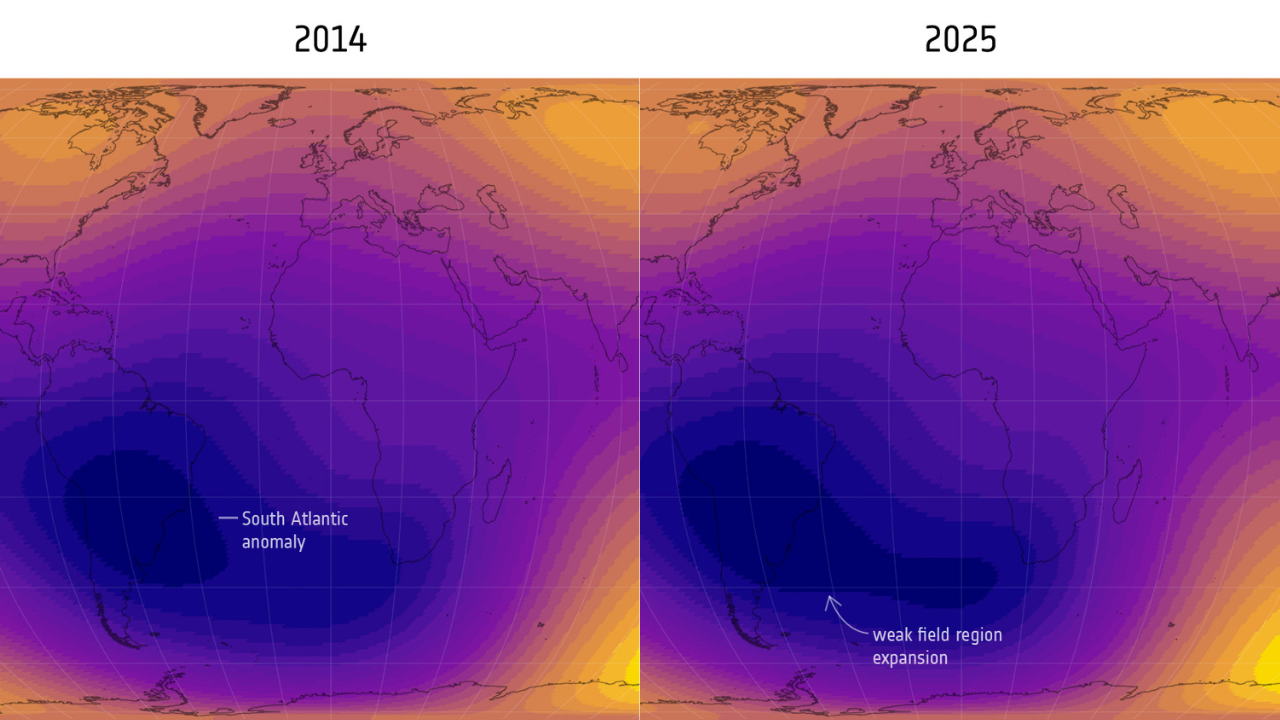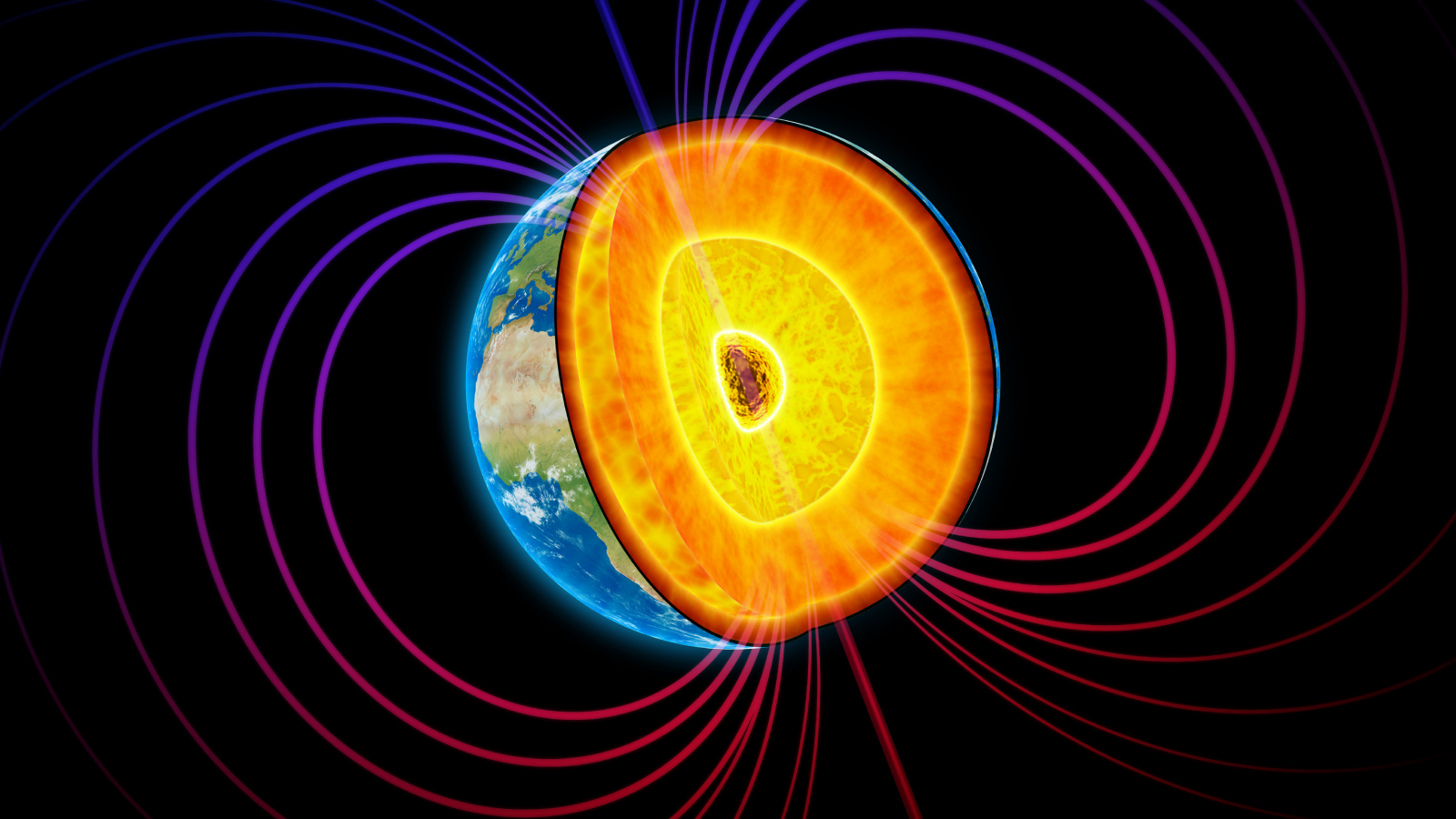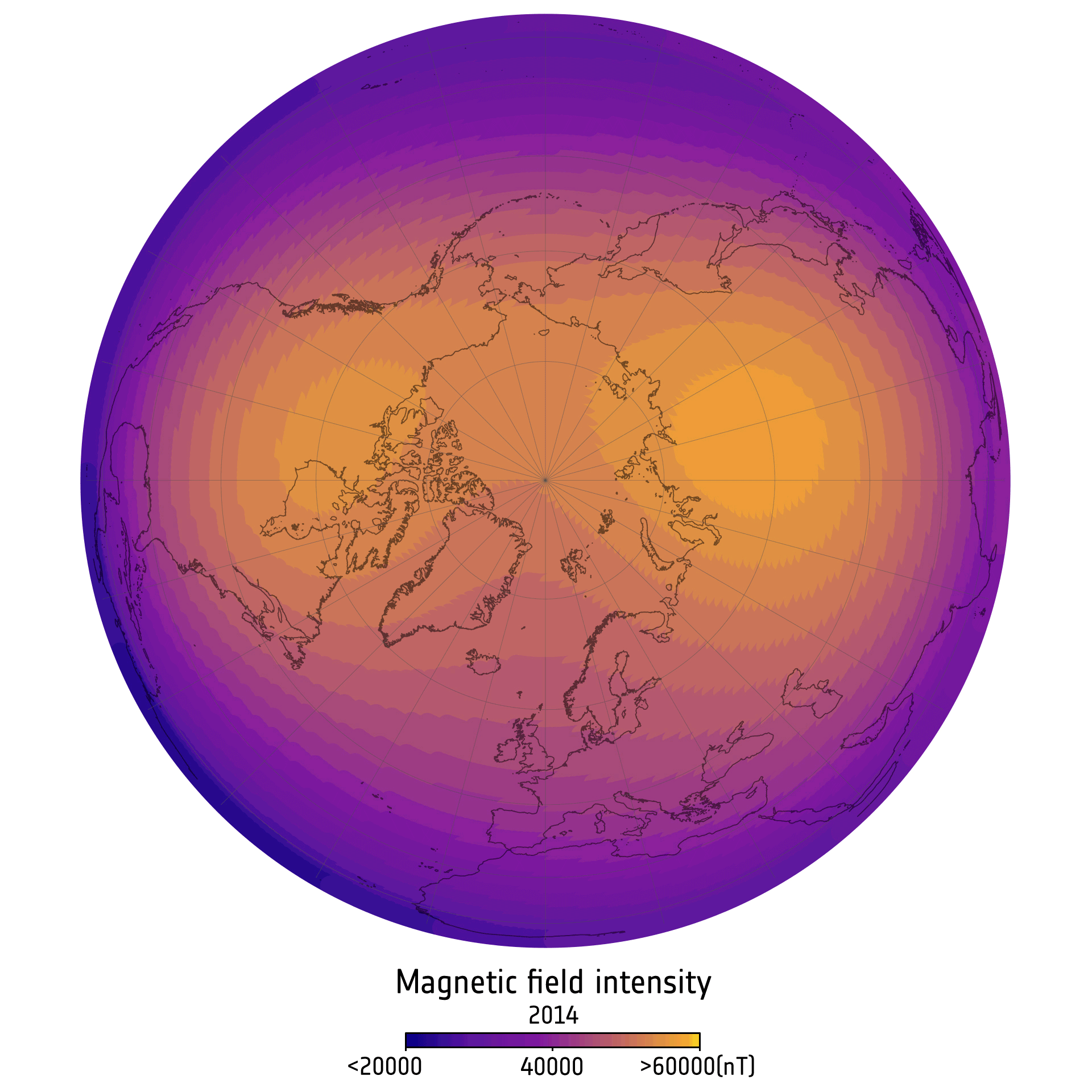A massive weak spot in Earth's magnetic field is growing, scientists discover
The South Atlantic Anomaly, a huge weak spot in the geomagnetic field off South America, has expanded and sprouted a lobe in the direction of Africa over the past decade.

A weak spot in Earth's magnetic field over the South Atlantic Ocean has ballooned in size since 2014, satellite data reveals.
The region, known as the South Atlantic Anomaly, has grown by an area nearly half the size of continental Europe, sprouting a lobe in the direction of Africa where the field is weakening the fastest.
And the anomaly, linked to mysterious fluctuations near Earth's outer core, could pose a risk to satellites passing over the region, according to a study published in the November issue of the journal Physics of the Earth and Planetary Interiors.
"The South Atlantic Anomaly is not just a single block," study lead author Chris Finlay, a professor of geomagnetism at the Technical University of Denmark, said in a statement. "It's changing differently towards Africa than it is near South America. There's something special happening in this region that is causing the field to weaken in a more intense way."
Researchers first detected the South Atlantic Anomaly in the 19th century. Inside its boundaries, the magnetic field that radiates away from Earth's interior dips down to an altitude of about 120 miles (200 kilometers) above the planet's surface, which is much lower than the field's average altitude of about 400 miles (650 km).
This poses a threat to satellites and other spacecraft. Earth's magnetic field shields the planet and objects in low Earth orbit from charged solar particles and incoming X-ray and ultraviolet radiation, so spacecraft traveling over the South Atlantic Anomaly are exposed to more of these impacts. This could lead to malfunctions or damage in hardware, and even blackouts, according to the statement.
Finlay and his colleagues think the South Atlantic Anomaly is growing and spreading eastward due to strange fluxes at the limit between Earth's mantle and outer core, the layers of the planet sandwiched between Earth's crust and inner core.
Get the world’s most fascinating discoveries delivered straight to your inbox.

Earth's magnetic field is largely generated by Earth's outer core — an ocean of swirling, molten iron located roughly 1,900 miles (3,000 km) beneath the planet's surface. The liquid iron dynamo generates electrical currents, and their flow induces a magnetic field that spreads up into the mantle and extends through Earth's atmosphere, forming two giant rings that join near the poles.
Scientists previously found that in some areas beneath the South Atlantic Anomaly, the magnetism generated by the outer core is looping back into the core instead of coming out. These patterns, known as reverse flux patches, can migrate and expand, explaining the growth of the South Atlantic Anomaly over the past 11 years, Finlay said.
“We can see one of these areas moving westward over Africa, which contributes to the weakening of the South Atlantic Anomaly [the magnetic field] in this region," he added.

The scientists spotted the unusual shifts in data from the European Space Agency’s (ESA's) ongoing Swarm mission, which uses three identical satellites to measure magnetic signals originating from Earth's interior and oceans. The data also revealed changes in magnetic field dynamics above Canada and Siberia, where magnetism has appeared more intense than average since Swarm began its observations in 2013.
Since 2014, the magnetic field above Canada has weakened slightly, and the magnetic field above Siberia has strengthened, the new study shows. The strong region over Canada has shrunk by an area nearly the size of India, while the strong region over Siberia has grown by an area the size of Greenland. The researchers attributed these changes to a shift in Earth's northern magnetic pole in Siberia's direction over recent years, but more monitoring is needed to see how the dynamics evolve.
"It's really wonderful to see the big picture of our dynamic Earth," Anja Strømme, ESA's Swarm mission manager, said in the statement. "The satellites are all healthy and providing excellent data, so we can hopefully extend that record beyond 2030."

Sascha is a U.K.-based staff writer at Live Science. She holds a bachelor’s degree in biology from the University of Southampton in England and a master’s degree in science communication from Imperial College London. Her work has appeared in The Guardian and the health website Zoe. Besides writing, she enjoys playing tennis, bread-making and browsing second-hand shops for hidden gems.
You must confirm your public display name before commenting
Please logout and then login again, you will then be prompted to enter your display name.
